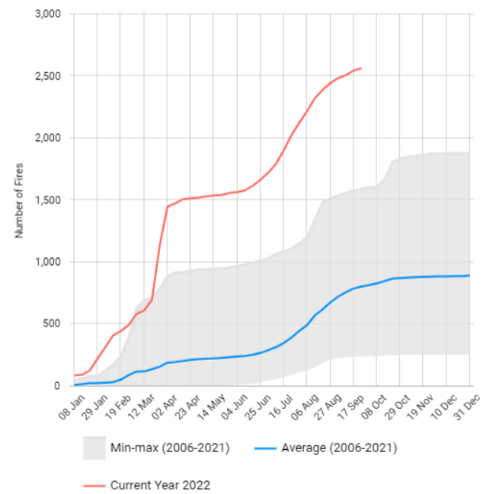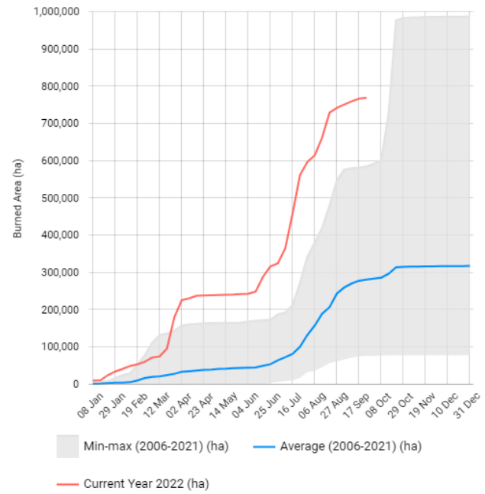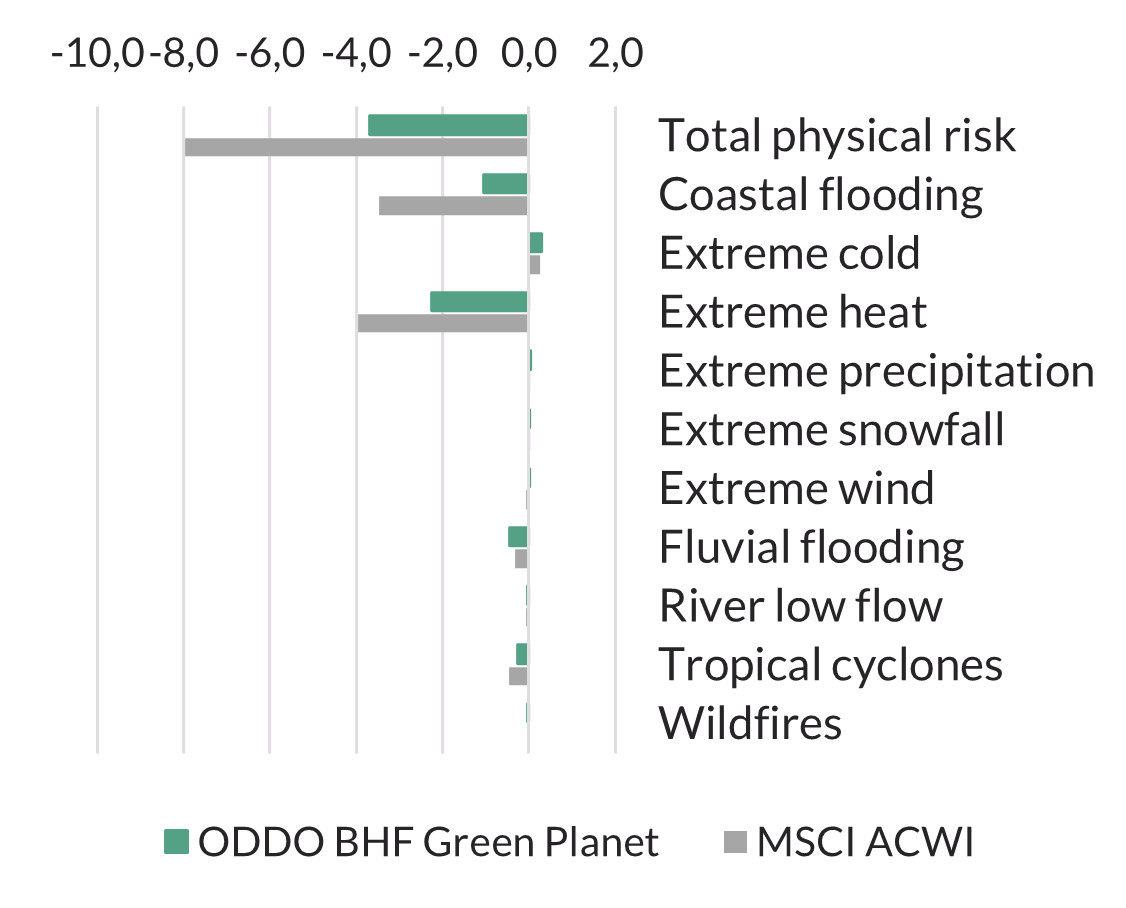By ODDO BHF AM
In this new Fund Insight ODDO BHF Green Planet, we look back at the increase in forest fires in Europe this summer, which were 3.2 times higher than the average for the last 15 years. The IPCC's sixth report, and more specifically the work of the first working group on the physical consequences of climate change published in August 20211, confirms the influence of global warming on the intensity and frequency of forest fires in several regions of the world, including Europe. Beyond the physical consequences and the need to preserve and restore the natural carbon sinks that are forests (which absorb about 20% of the CO2 emitted each year), the economic cost of fires is becoming increasingly significant. In 2017, a devastating year in the US, Canada and Portugal, the bill was $21bn². These events lead us to take a closer look at the exposure of the ODDO BHF Green Planet fund to the physical risks associated with global warming.
Forest fires: consequence and accelerator of global warming
Beyond a source of ignition, whether voluntary or not, forest fires are caused by a combination of factors aggravated by global warming:
- High temperatures (e.g. in 2022, France experienced its first major heat wave as early as in May)
- Prolonged lack of rainfall (2022 saw the 5th driest winter in Spain and Portugal since records began)
- Dry soils (Italy has declared a state of drought emergency in the north of the country due to lack of available water)
These phenomena have been increasing in intensity and frequency over the last few decades in several regions of the world such as Northern Asia, Australia, the United States and Europe.
In Europe, with 2,566 fires recorded as of 24 September, the year 2022 has seen 3.2x more fires than the average for the last 15 years. The ratio is 2.7x for burnt areas.
Weekly cumulative number of fires

Weekly cumulative area burned

The increase in the number of fires also destroys the natural absorption capacity of forests, which are the largest carbon sink ahead of the oceans, and capture around 20% of annual CO2 emissions. Forest fires therefore also act as an accelerator of global warming.
Faced with this vicious circle, governments and companies alike must place the fight against climate change at the heart of their strategy by putting in place effective and sustainable mitigation and adaptation policies.
Our exposure to the physical risks of global warming
These events lead us to look more closely at all the physical risks associated with global warming. We distinguish between chronic risks (heat waves, extreme cold, wind, snow, precipitation) and severe risks (tropical cyclones, floods, drying up of rivers, forest fires). In 2020, our extra-financial data provider, MSCI ESG Research, launched a methodology for analysing climate risks applied to an investment portfolio (Climate VaR1). The methodology distinguishes between transition risks, physical risks, and opportunities related to mitigation technologies, resulting in an aggregated VaR at the level of each covered company.
The physical risk analysis is based on the IPCC's Relative Concentration Pathways (RCP) applied to the geographical location of companies' assets (39 locations on average per company for the 2,100 companies included in the Climate VaR analysis), andtakes into account both potential damage to assets and contingent business interruptions.
As of 23 September 2022, the aggregate Value at Risk (VaR) of the ODDO BHF Green Planet fund's physical risks was -3.7% of its asset value, compared with -8.0% for its benchmark (MSCI ACWI). The main risks are heat waves and floods, while forest fires are marginal for both the fund and the benchmark (weighted VaR of -0.002% and -0.004% respectively).
Value at Risk (in %) of physical risks

For example, the two companies in the portfolio with the highest exposure to forest fire risk are Honda in Japan (VaR of -0.02%) and Hydro One in Canada (VaR of -0.01%).



